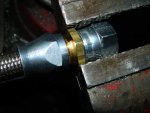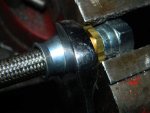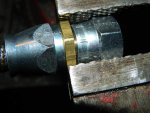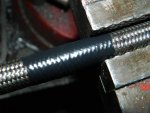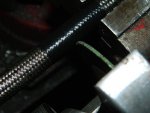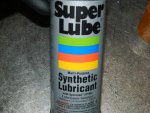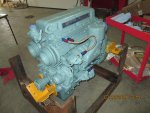rustystud
Well-known member
- 9,267
- 2,964
- 113
- Location
- Woodinville, Washington
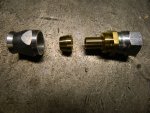
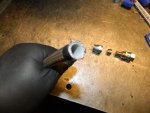
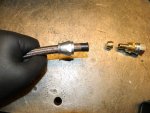
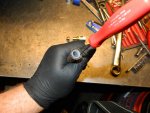
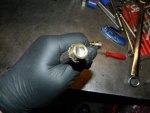
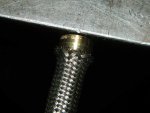
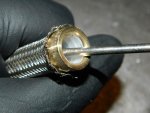
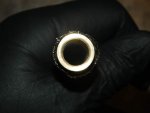
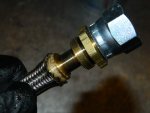
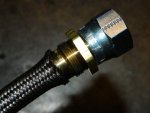 I told Aaron (peashooter) a while back (OK maybe a year or two or more !) that I would post some pictures of how to assemble the reusable (field repairable) Stainless Steel lined PTFE hose fittings. Well I was cleaning my computer ( too much junk !) I came across these pictures. So I will explain the process. There are 3 pieces that make up the fitting. The main body, the ferrule, and the clamp (at least that's what I call it ) . You first slide on the clamp over the tape, picture 3 ( I'll explain later) . Remove the tape, then using a small screwdriver gently pry back the stainless steel braid from the Teflon hose ( picture 4 ) . There must be NO strands left touching the hose ! . Then push on the ferrule (pictures 5 and 6 ) . It will take a little force to do this. The hose will bottom on the inner lip of the ferrule. Then again using the round shaft of the small screwdriver gently force the hose into the ferrule walls until it is a smooth surface looking straight down the hose ( pictures 7 and 8 ). Now use a Teflon based spray to lube the hose and insert the main body. You will have to push and twist at the same time using considerable force to get the body to seat all the way in ( picture 10 ) . Do NOT bend the hose assembly while doing this ! It must be a straight push in or you risk dislodging the ferrule.
I told Aaron (peashooter) a while back (OK maybe a year or two or more !) that I would post some pictures of how to assemble the reusable (field repairable) Stainless Steel lined PTFE hose fittings. Well I was cleaning my computer ( too much junk !) I came across these pictures. So I will explain the process. There are 3 pieces that make up the fitting. The main body, the ferrule, and the clamp (at least that's what I call it ) . You first slide on the clamp over the tape, picture 3 ( I'll explain later) . Remove the tape, then using a small screwdriver gently pry back the stainless steel braid from the Teflon hose ( picture 4 ) . There must be NO strands left touching the hose ! . Then push on the ferrule (pictures 5 and 6 ) . It will take a little force to do this. The hose will bottom on the inner lip of the ferrule. Then again using the round shaft of the small screwdriver gently force the hose into the ferrule walls until it is a smooth surface looking straight down the hose ( pictures 7 and 8 ). Now use a Teflon based spray to lube the hose and insert the main body. You will have to push and twist at the same time using considerable force to get the body to seat all the way in ( picture 10 ) . Do NOT bend the hose assembly while doing this ! It must be a straight push in or you risk dislodging the ferrule.
Last edited:



